![]() Guest Blog by Todd Hockenberry, of Top Line Results and co-author of Inbound Organization
Guest Blog by Todd Hockenberry, of Top Line Results and co-author of Inbound Organization
To create predictable revenue growth, manufacturing companies need to change their thinking about how they view buyers. The old formula of hiring a salesperson, going to the same trade shows, knocking on prospects doors, and cold calling no longer works to build a predictable revenue stream. Buyers, and the way they find information, evaluate options, consider vendor choices, and make decisions have changed. Has your thinking about buyers changed accordingly? We hear a lot of talk about buyers changing but we have seen little evidence that manufacturing companies have changed to meet buyers where they are today.
The companies that survive and thrive with predictable revenue engines in the age of buyer control will be the ones that become inbound organizations – ones that are built for and solve for the customer, where everyone is aligned around the goals of the customer, and fully invested in the success of the customer.
“Many companies recognize the need to change manufacturing marketing tactics, to use content, develop a digital marketing presence, and adapt to the ability of buyers to control the process. Few see it as fundamental to the operation, structure, and strategy of the entire organization.” *
The question is no longer whether buyers are changing, enough ink has been spilled on that topic. The question is how do business leaders build organizations that serve and succeed given this new buyer behavior and create a predictable revenue engine?
Culture of Customer First
![]() "The first and most important step is to shift the organization’s mindset to focus on solving for the customer. Make decisions based on what’s in their interest—because what’s in the customer’s interest is in the organization’s interest too." Dharmesh Shah, HubSpot*.
"The first and most important step is to shift the organization’s mindset to focus on solving for the customer. Make decisions based on what’s in their interest—because what’s in the customer’s interest is in the organization’s interest too." Dharmesh Shah, HubSpot*.
Hold on, we put the customer first. We say it in our mission statement on the wall in the front office (that no one in your company actually reads).
Maybe you sales team does, or is the quota you assigned for this quarter the most important thing?
Maybe your product team does, but do they survey customers regularly to understand what features they want or are they just guessing?
But does your back office, or are they concerned about getting the transaction completed on their time frame, with no human connection to the customer, hiding behind policies, office hours, and terms and conditions?
Does your service team, or do they just react when the phone rings and try to make the customer go away and stop complaining at the least possible cost to the company?
Do your customer facing teams insure your customers are successful with your product or do they set it up, get them going, and then forget about them until they have a problem? Do you even really know if your customers are successful achieving the goals they had when they bought from you in the first place?
Building a predictable revenue engine requires creating a company mission centered on the goals of customers and culture of helping customers achieve those goals first. And then getting everyone in the organization aligned around that mission and then acting every day in ways that help fulfill it.
If your business develops a clear mission, then your culture is the environment that either drives everyone towards the mission or stands in the way. Culture is the sum of the values, attitudes, beliefs, and behaviors of leadership applied through an operating system. Your operating system is the set of tools and processes your business develops to guide your team towards the mission. The operating system includes communication systems and tools, employee feedback mechanisms, your documented culture, and connections for each employee to the company strategies and plans and how they contribute to the overall business objectives.
Your culture drives alignment to the mission. Your operating system enables your people to deliver value to the customer and to contribute feedback to the team and leadership.
A customer focused culture aligns everyone with the goals of the customer. And if everyone is aligned with the goals of the customer then your business will grow.
“An inbound organization is guided by a philosophy, a set of core beliefs, and best practices that impact every person in every department to provide value and build trust with customers, partners, and anyone they touch.” *
Key inbound culture characteristics include internal and external transparency, valuing people first, adopting small, nimble teams, moving decision-making closer to the customer, building trust and accountability without heavy policy proscriptions, documenting your culture and beliefs, and a system for finding people that fit within and add to the culture.
Why does a customer focused mission and culture drive revenue?
“As Peter Drucker once said, “Culture eats strategy for breakfast.” A culture of customer focus, solving for the customer, with everyone aligned around the needs of the customer, and making sure customers are successful is the way to grow your business in this age of buyer control.”
So how does a manufacturing company with a customer focused mindset, mission, and culture translate that into a predictable revenue engine?
Consistent Messaging
![]() It is one thing to say you are customer focused it is another to live it. One of the first places I go to see how potential clients think is to look at their websites. What is the first thing your prospect sees when they find your company online? Is it something about the customer - them - and their goals, issues, problems, outcomes? Rarely. Usually it is product, product, some more product, and then a quote about the product on top of a picture of the product.
It is one thing to say you are customer focused it is another to live it. One of the first places I go to see how potential clients think is to look at their websites. What is the first thing your prospect sees when they find your company online? Is it something about the customer - them - and their goals, issues, problems, outcomes? Rarely. Usually it is product, product, some more product, and then a quote about the product on top of a picture of the product.
Look at the content of your presentations your team give to prospects. Are they dominated by features, specifications, and technical information or is it about your customers, their goals, their outcomes, their issues?
Why is this so? Why do manufacturers and industrial companies tend to focus so much of their product?
Most leaders of manufacturing companies are technical people, including the salespeople, and are trained to see a one-to-one connection between their product and the problem it solves. They see it and tend to get frustrated when everyone else does not see the obvious, just like they do.
Linear thinking where feature leads to a benefit is as deep as most manufacturing people get into the buyer's world. They rarely think of the goals of the customers and how the product helps them in a bigger sense, the business outcome from the buyer’s perspective - which is what the customer is really buying.
So there is a disconnect between what is sold and what is bought. The manufacturing company sold a machine or widget, the buyer bought an outcome and job that needed to be done. Seems obvious but in practice this type of thinking, and the resulting translation to a manufacturing company's messaging, is rare.
The immediate cause of product focus is a lack of empathy with the buyer, seeing things from the other's perspective (this is why ambiverts are the best salespeople, people not afraid to be extroverted when needed but humble enough to listen with empathy).
Technical folks have been conditioned to look down on marketing and anyone that deals in non-technical areas - I might title this the Dilbert effect - and one result is the focus on product in industrial messaging and communication.
So product thinking stems from a lack of understanding and empathy and being trained in a certain way of thinking - they must change their thinking first and then the actions will follow.
Messaging is critical both Internally and externally. There is an often told story of Jeff Bezos where in every meeting there is an empty chair representing the customer to remind everyone that every decision they make in that meeting must be in the best interests of the customer.
Is the customer at the heart of every decision your teams make? Every decision you as a leader make?
Leaders must consistently share the customer focused mission with their teams and make sure everyone stays focused on the customer and their outcomes. The messages from many manufacturing leaders betray their focus - make sure the messages shared consistently to your team reinforce the customer focus of your mission and your culture. Listen to how you ask questions, set goals, frame priorities and make sure the customer is the focus of them all.
To build a predictable revenue stream for manufacturing companies first change your mindset to match modern buyers and then put yourself in their shoes, understand how you help them achieve their goals, and start talking about that instead of product first.
In the next article we will discuss how connecting with buyers, creating a remarkable customer experience, and driving customer success are the next steps once a customer focused mission, culture, and messaging are in place, resulting in a predictable revenue engine for manufacturing companies.
*Inbound Organization, Wiley 2018
Todd Hockenberry will be the keynote speaker at Industrial Inbound Summit 2018. Hockenberry will be speaking on the culture of customers first, and why growing sales starts with internal change. The Industrial Inbound Summit is a one-day event, where manufacturers will create custom marketing & sales playbooks with expert instruction from our speakers and on-site marketing advisors. Learn more about this event here.





